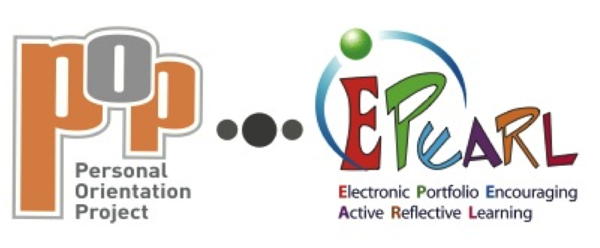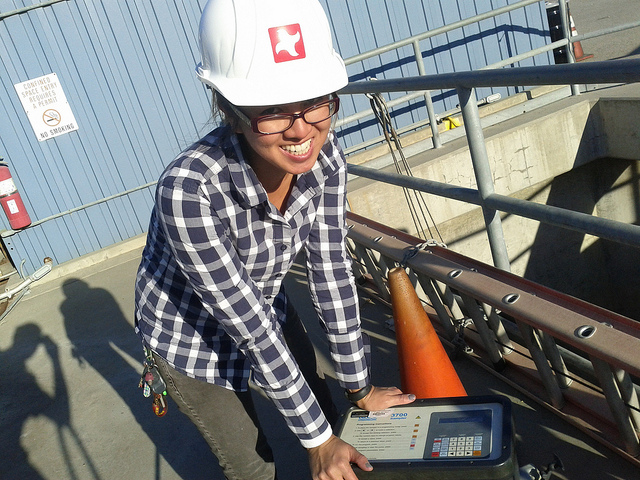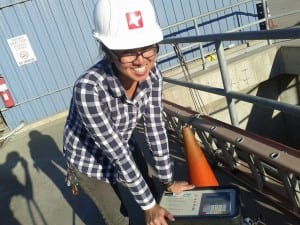One of the main goals of schooling is to prepare students for a fulfilling life in the workplace, an often difficult task when you are functioning in a traditional course-based high-school model. Enter The Personal Orientation Project (POP). POP is a Career Development course aimed at Secondary Cycle Two (Grade 9) students. Its purpose is to guide students in the process of discovering different career paths, providing them with tools to make appropriate career choices. More so than many high school courses, POP offers an venue for real self-directed learning. The teacher’s role is to support the students in their career explorations, and to offer them opportunities to think outside the box by examining career possibilities that they might not have considered on their own.
The POP course is not a typical high school course. Students undertake career development explorations with greater autonomy than in many of their other courses. In the process of learning about different career paths and their own aptitudes and interests, students collect a rich bank of experiences and knowledge, while the teacher acts as a guide and sounding board.
The POP learning and evaluation process is known as KPOP (Know Yourself, Plan, On-Task and Ponder). KPOP mirrors the phases of self-regulated learning: Planning, Doing and Reflecting, with self-knowledge added to the mix. Each phase is scaffolded with reflection questions that help the student develop their profile and execute a career exploration.
The use of portfolio in POP can enrich career explorations for the student, and make teacher’s role easier. Maintaining a portfolio allows the student to not only keep a record of his/her explorations and reflections, it also facilitates sharing those experiences with the teacher and peers
Technology plays an important role in POP. The configuration of the POP classroom is effectively a computer lab environment in which students can conduct web research on various careers, experience simulations of different work environments (e.g., aviation), or learn to use the software employed in different professions.

POP-ePearl is a digital portfolio tool designed specifically for POP. It is a component of the ePearl digital portfolio tool developed by Concordia University’s Centre for the Study of Learning and Performance (CSLP) in partnership with LEARN, MELS and others. POP-ePearl leverages the technology angle of the POP course.
There are several key advantages that POP-ePearl offers:
- Convenience: Students can typically use ePearl anywhere they can access their school board portal, and since they are working in a POP classroom, they can record their experiences and reflections as they work through their career explorations.
- Immediacy: Teacher and peer feedback on student work can be shared with students easily and quickly.
- Iteration: The student can easily build on their experiences as they pursue other explorations, and refer to earlier work.
Craig Bullett is the RÉCIT animator for the Eastern Shores School Board (ESSB). For Craig, POP-ePearl offers distinct advantages for POP teachers and their students.
“There are resources built-in,” according to Craig, “You don’t have to spend time looking for stuff or creating it. There are plenty of resources available for teachers to feel comfortable managing the course.”
POP-ePearl supports POP through close integration with the learning and evaluation process. Students are presented with help prompts, cues and suggested reflection questions as they work through the phases of KPOP. They can record their reflections and experiences in different ways: writing directly in ePearl, recording their voice, attaching files created elsewhere or even linking to an external site like a blog or a photo stream. Students’ learning traces are always available to their teacher, but can be shared by each student with individuals or the whole class. Using a parent mode, students can also get feedback from their parents.
New approaches are not always an easy sell, and teachers are sometimes reticent to take on a new way of working, so Craig took a unique approach.
“I offered to launch it for teachers to their students. One teacher took me up on it and it worked well. The teacher was able to be a ‘fly on the wall’ and learn with their students as I introduced it.”
“Three other teachers have since approached me to do the same.”
Eastern Shores has had to be resourceful in its use of POP materials. Instead of purchasing a full set of POP experiential toolkits for each of their schools, a limited supply of kits are rotated through the schools on a schedule. Not only is it an effective way to manage limited resources, but time constraints it imposes in the classroom can actually help the students manage their time.
In this kind of setting, POP-ePearl can play a role by saving students and teachers time. Since the POP classroom is set up with technology in mind, students have immediate access to it.
Travis Hall, Career Development Consultant at English Montreal School Board, saw the usefulness of POP-ePearl immediately.
“POP ePEARL makes sense. That was my first thought when I tried it,” says Travis.
Matthew Maxham teaches the Personal Orientation Project (POP) at LaurenHill Academy in Ville St-Laurent. His is a large school and he has many students. For Matthew POP-ePearl has an obvious plus: “Now I won’t need to rent a van to take student work home to mark.”
Are you interested in learning more about POP-ePearl and getting a look at the tool? Join me at the next LEARN Web Event on April 9th.






